We know from past civilizations and legacies that it is possible to produce all the colors our eyes see with natural resources in nature. This is the most important part of our business to make many resources to improve our dyeing techniques. We use both old techniques and new methods to have the unique and incredible natural colors you see in oriental and modern carpets without using any chemicals. We are in constant cooperation with universities and academics.
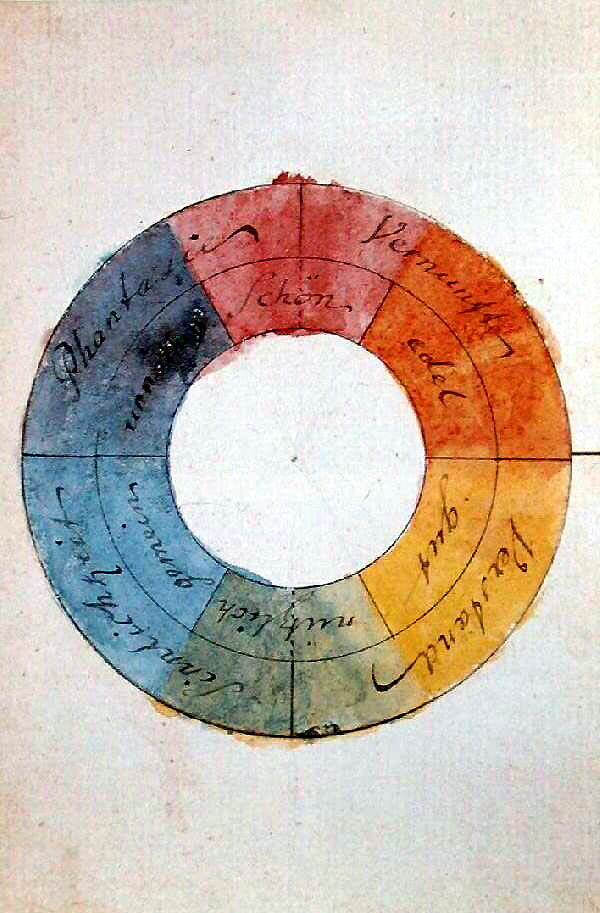 Photo: Goethe's symmetric color wheel with 'reciprocally evoked colors' - 1810
Photo: Goethe's symmetric color wheel with 'reciprocally evoked colors' - 1810In ancient times, artists invented the first pigments, a combination of soil, animal fat, burnt charcoal, and chalk, as early as 40,000 years ago, creating a basic palette of five colors: red, yellow, brown, black, and white. Since then, the history of color has been one of perpetual discovery, whether through exploration or scientific advancement. The invention of new pigments accompanied the developments of art history’s most significant movements, from the Renaissance to Impressionism, as artists experimented with colors never before seen in the history of painting.
Colors in the "ruddy" range of reds, browns, and oranges are the first attested colors in several ancient textile sites ranging from the Neolithic to the Bronze Age across the Levant, Egypt, Mesopotamia, and Europe, followed by evidence of blues and then yellows, with green appearing somewhat later. The earliest surviving evidence of textile dyeing was found at the large Neolithic settlement at Çatalhöyük in southern Anatolia, where traces of red dyes, possibly from ochre (iron oxide pigments from clay), were found. Polychrome or multicolored fabrics seem to have been developed in the 3rd or 2nd millennium BCE. Textiles with a "red-brown warp and an ochre-yellow weft" were discovered in Egyptian pyramids of the Sixth Dynasty (2345–2180 BCE). Archaeologists have found evidence of textile dyeing dating back to the Neolithic period. In China, dyeing with plants, barks, and insects has been traced back more than 5,000 years.
Aristotle, Hasan Ibn al-Haytham, Isaac Newton, Goethe, and many other important scientists & philosophers contributed scientifically to understand colors better. He enlightened our journey to creating antiques for the 21st century.
DOBAG is the Turkish acronym for "Doğal Boya Araştırma ve Geliştirme Projesi" (the Natural Dye Research and Development Project). The project aims to revive the traditional Turkish carpet weaving art and craft. It provides inhabitants of a rural village in Anatolia – mostly female – with a regular source of income. The DOBAG initiative marks the return of traditional rug production by using handspun wool dyed with natural colors, which was subsequently adopted in other rug-producing countries.
The DOBAG project started in 1981 and was led by Harald Boehmer, a German chemistry and biology teacher, in cooperation with Marmara University in Istanbul. He focused on chemical analyses of the dyes of antique woven carpets, such as those on display in Istanbul museums.
The analysis of carpet wool dyes was already suggested by A. Cecil Edwards in 1953 to establish the provenance of period carpets. In 1982, Boehmer published his work on antique carpet wool samples using thin-layer chromatography. The natural dye components were identified by comparing chromatograms of samples of carpet wool and plants known to have been employed for dyeing, and the dyeing procedures were experimentally recreated subsequently. The first demonstration of traditional dyeing techniques occurred in some villages of the Ayvacik area in Çanakkale. The region was chosen because of its long, continuous carpet-weaving tradition. Later, another project branch was initiated in the Yuntdağ region, south of Bergama. Here, the first women's cooperative in Turkey was established within the DOBAG Project.
DOBAG carpets are woven with Turkish knots. The carpets are made of handspun sheep wool, dyed locally with natural dyes prepared according to the recipes as experimentally re-established. No chemical treatment is applied after the carpet has been finished. Dyes used for DOBAG carpets are obtained from plants and include Red from Madder (Rubia tinctorum) roots, Yellow from plants, including Onion (Allium cepa), specific chamomile species (Anthemis, Matricaria chamomilla), and Euphorbia, Black: Oak apples, Oak acorns, and Tanner's sumach, Green by double dyeing with Indigo and yellow dye. Orange is dyed double with madder red and yellow dye. Blue: Synthetic Indigo is used because it is chemically identical to natural Indigo gained from Indigofera tinctoria.
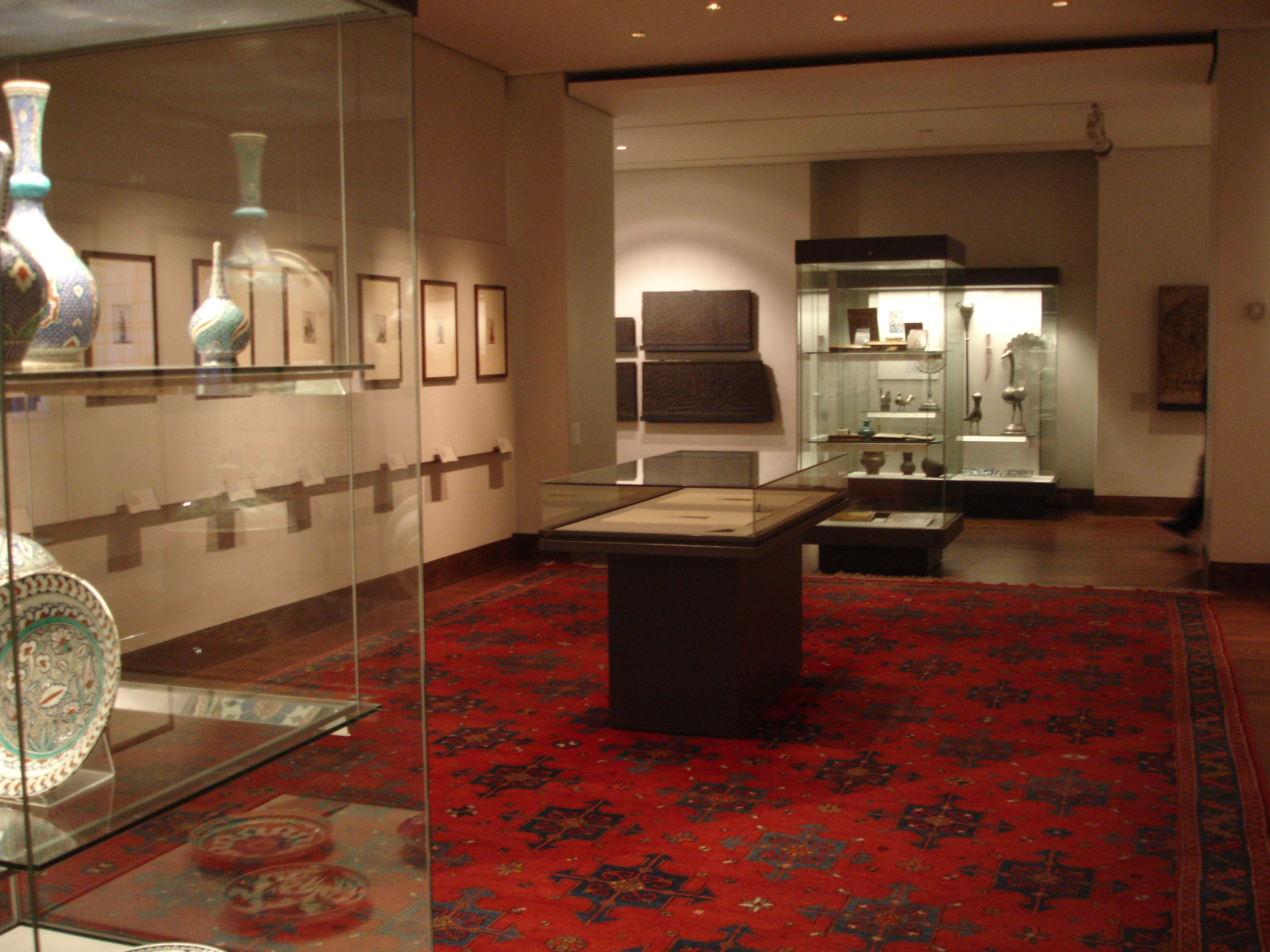 Photo: DOBAG carpet commissioned for the British Museum's Islamic Gallery
Photo: DOBAG carpet commissioned for the British Museum's Islamic Gallery
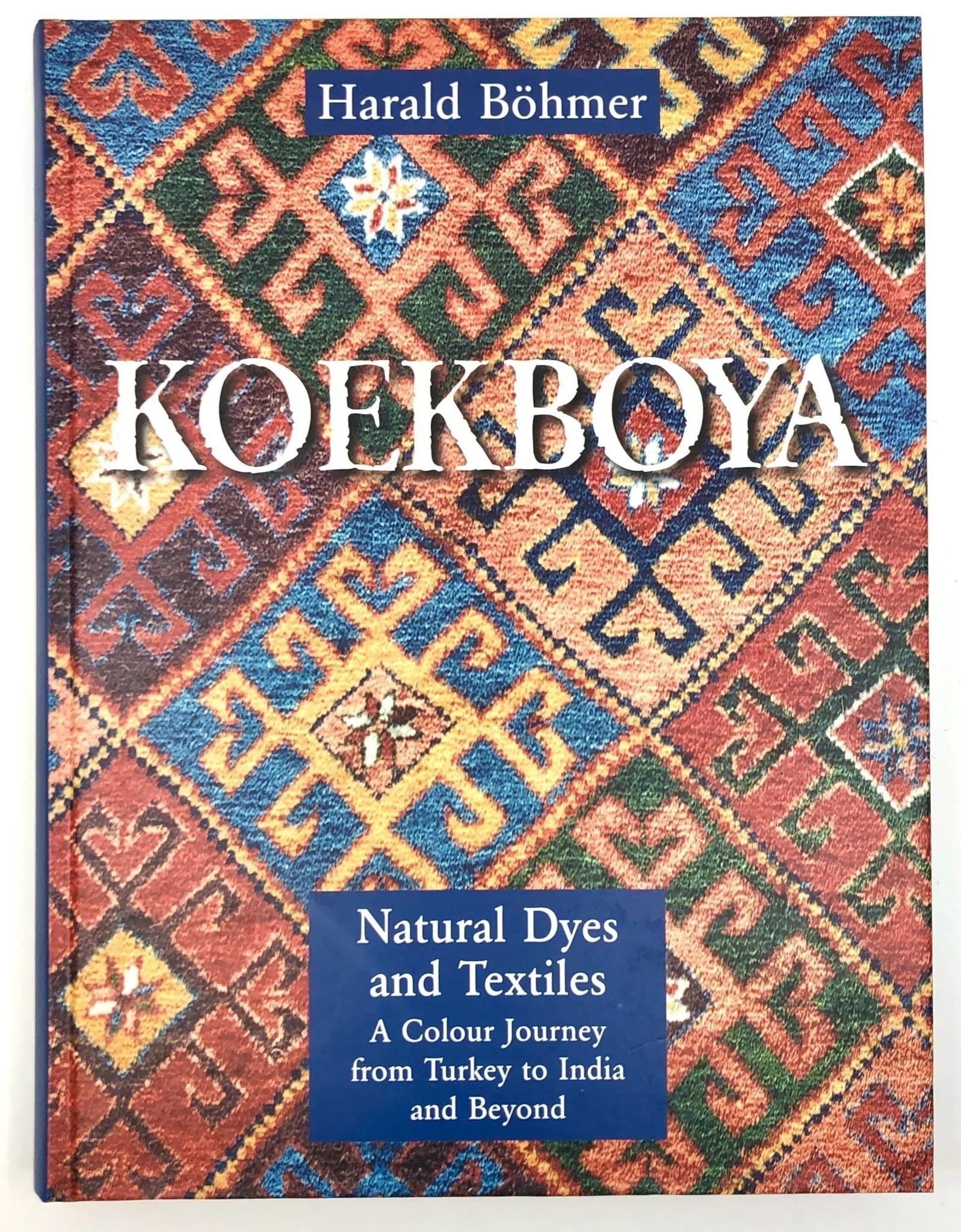 Photo: Harald Böhmer's Koekboya: Natural Dyes and Textiles Book
Photo: Harald Böhmer's Koekboya: Natural Dyes and Textiles Book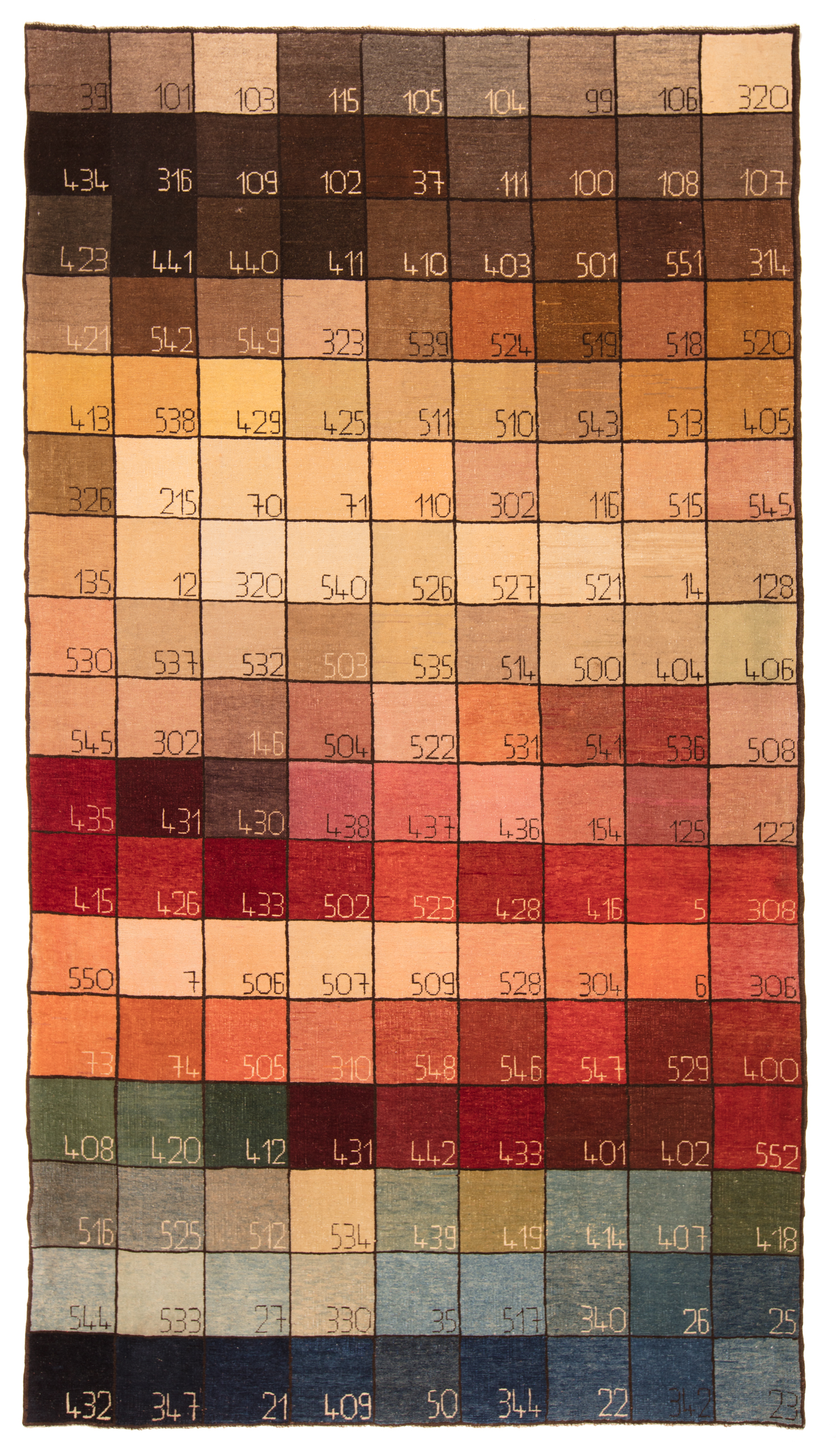 Photo: Ararat's Color Chart Carpet, Tokyo-2018
Photo: Ararat's Color Chart Carpet, Tokyo-2018In the 1930s from the Agricultural Institute ( Köy Enstitüleri ) in Ankara, a vital work by Refik Korur was written in German: Die Färbepflanzen der Türkei, published in 1937. At that time, many emigrants from Germany were active at Turkish universities and other state institutions. There also were non-emigrants, whom Atatürk had brought to the country as specialists.
Ararat’s Color Chart Carpet was not made in a day, and years of experience and knowledge passed through DOBAG and Herald Böhmer. Ararat is now carrying the flag of those values to the future. As you may see in our Color Chart Rug, how to dye each color has been clarified, and each recipe is stored as an "Ararat Rugs Knowledge Treasure." Of course, it is not limited to this color chart, and the fact that we have specialists who can dye various variations as needed is another strength unique to us and our production area.
In the 1980s, Dr. Harald Böhmer, author of “KOEKBOYA - Natural Dyes and Textiles a Color Journey from Turkey to India and Beyond," traveled from Turkey to India and researched 100 kinds of plant dyeing materials and dyeing methods. In 1960, Herald Böhmer was appointed science teacher at a German international school in Istanbul. Within walking distance from school at the Grand Bazaar, he encountered many carpets and kilims and was inspired by their colors and beauty. His research stance, which investigates chemistry, then he remained a formula and significantly contributed to subsequent carpet making. In the era when the two researchers set out to elucidate the miraculous color dyeing, industrialization aimed at mass production progressed rapidly, as did tradition. Dr. Böhmer, during his research, introduced a German fund, along with the Marmara University of Istanbul, to implement and take a step into practice the DOBAG project. The goal of the project was to make carpets using traditional natural dyes. The aim was to connect rugs and flat-woven rugs to the international market, to ensure the economic stability of the women in the village, and to ensure the village's survival. Since its start in 1981, the project has had breakthrough success, and the carpets have spread worldwide.
Ararat Rugs is proud to keep the knowledge and experience of Dr. Refik Korur, Dr. Harald Böhmer, and Recep Karadag (Assistant of Böhmer). Without these efforts, we would not have been able to have the dream of creating antiques for the 21st century. Rome was not built in a day, and in fact, it took a long, long time to create the background of our Color Chart Carpet.
Court-weaving workshop documents about natural dyeing for carpets that have survived from the 15th to 16th centuries from Mughal, Safavid, and Ushak workshops are gathered at that time with knowledge and experience from tribal and local villagers' dyeing techniques. In his research, Dr. Harald Böhmer used those documents as well. Still, he also traveled across the villages in the region and added more specific information like the Lightfastness and Washfastness properties of different dyes. When he checked the 1930s Dr. Refik Korur’s studies, he noticed some colors faded due to Lightfastness. This shows us that we should also continuously practice our new colors ‘timefastness’ (as we call them) to keep our carpet's color as long as today's antiques.
Anatolia was probably the original home of madder, but the natural distribution includes Caucasus, Iran, and western Central Asia, as far as the northwestern Himalayas. The Egyptians, Greeks, and Romans used madder as a dyestuff. The Romans were the first to bring the plant to Central Europe. Then, the Arabs brought it again to Europe, to Moorish Spain. (The old trading name for madder, "alizari," includes the Arabis article "al.") as early as 800 AD. In our carpets' shades of red, violet, and orange colors, we are using Anatolian Rubia Tinctorium with very good Lightfastness.
It was already known to the Romans as the best dye plant for a lightfast yellow. The characteristic dyestuff luteolin is found in many old textiles with an unfaded - or only a little faded - yellow. Dye analyses have shown that the Ushak carpets and the so-called Lotto carpets from the 16th century were dyed with Reseda luteola. Cultivation and use of this dye plant in Turkey and Europe disappeared toward the end of the 19th century in the face of competition from the new synthetic dyes. Since the reintroduction of natural dyes in Turkey in the 1980s, dyers' weeds have been growing in many gardens in villages where rugs are made. In our carpets' shades of intensive yellow colors, we are using Anatolian Reseda Luteola with sufficient Lightfastness.
The various species of the large group of plants known as Kamillen in German are members of the Daisy or Aster Family (Compositae Asteraceae). The largest genus is Anthemis. In Turkey alone, 50 species are known. The differentiation between them is difficult. The genus is still in evolution. From our experience, at least ten species are suitable as dye plants. In our carpets' shades of yellow colors, we are using Anatolian Chamomile with very good Lightfastness.
The pomegranate was already known to the ancient Egyptians and is mentioned several times in the Old Testament. Adam picked a pomegranate for Eve (with fateful results, we know); the prize Paris awarded Aphrodite was a pomegranate. Malum punicum, Punic apple, was a name used by the Romans, who learned of it from the Phoenicians in North Africa, or also malum granatum because of its many seeds, which made it a symbol of fertility. In our carpets' shades of yellow and brown colors, we are using Anatolian Punica Granatum with good Lightfastness.
According to villagers and nomads in Turkey, both this and other species of spurges were often named as dye plants that had been used in earlier times. According to Dr. Refik Korur, farmers considered the white milk of the plant to be a mordant and effective substance to increase the Lightfastness of dyestuffs from other plants (Korur 1937, p. 42). No systematic research has yet been done to prove or disprove this assumption. In old, naturally dyed Turkish villages and nomad rugs, quercetin has been most frequently identified in the yellow (Brüggemann/Böhmer 1980, P. 103). It may very often have come from a species of Euphorbia. In our carpets' shades of yellow colors, we are using Anatolian Euphoria Rigida (spurge) with adequate Lightfastness.
In Turkey and other countries in the temperate zone in both the New and the Old World, there is only one significant dye plant for brown: more than 20 species of the walnut family, Juglans. The outer husks of the nuts and the leaves have been used since ancient times to produce a brown dye. In our carpets' shades of brown colors, we are using Anatolian Juglans Regia with excellent Lightfastness.
Because of its high tannin content, for ages, this oak has been important for dyeing and tanning. Returning to natural dyes and tanning agents, the acorn caps are again being gathered, ground, and sold. This new respect for the value of these oaks in Turkey has slowed the felling of the trees to make charcoal. In our carpets' shades of brown and black colors, we are using Anatolian Quercus Ithaburensis with good Lightfastness.
During the 16th and 17th centuries, the most popular red pigment came from a cochineal insect, a creature that could only be found on prickly-pear cacti in Mexico. These white bugs produced a potent red dye so sought-after by artists and patrons that it quickly became the third greatest import out of the “New World” (after gold and silver), as explained by Victoria Finlay in A Brilliant History of Color in Art. Raphael, Rembrandt, and Rubens used cochineal as a glaze, layering the pigment atop other reds (like red ochre) to increase their intensity. In our carpets' shades of red, purple, and pink colors, we are using Peruvian Dactylopius Coccus with very good Lightfastness.>
It has been known since ancient times as a dyestuff, but more for the skin and hair and nails than for textiles. As early as 3,200 BC, the Egyptians mixed henna and Indigo into a paste to dye hair black. It has experienced a renaissance as a natural hair dye and for use in cosmetics. In Morocco, woolen shawls and ritual cloths of the Berber tribes from the Anti-Atlas are decorated in orange by painting with henna. Some of these have recently been dated to the 16th and 17th centuries by the carbon-14 method. In our carpets' shades of orangeish-brown colors, we are using Turkish & Indian Lawsonia Inermis with good Lightfastness.
Indigo is in the blue of all old textiles and many newer ones. Indigo-blue is beautiful, lightfast - even under the desert sun - and has been used for four thousand years in ancient Egypt and India. Many species of plants contain the preliminary stages of Indigo, but only a few - those with the highest content of the preliminary stages of the dyestuff- are used for dyeing. Only one of these, however, has been used worldwide at different times to obtain more or less pure and thus easily traded indigo dyestuff. These are the varieties of the Indigofera family, the most important of which is Indigofera tinctoria. In our carpets' shades of blue colors, including green colors (with a second bath of yellow dyestuff), we are using Indian Indigofera Tinctoria (indigo cakes) with excellent Lightfastness.
We are gathering all the dyeing materials high-quality and expensive in the market and constantly checking the quality of raw materials. As a result, our production is exclusive and in limited quantities. We strive to ensure that each of our carpets is of a quality that will defy years and of value to be transferred between generations.
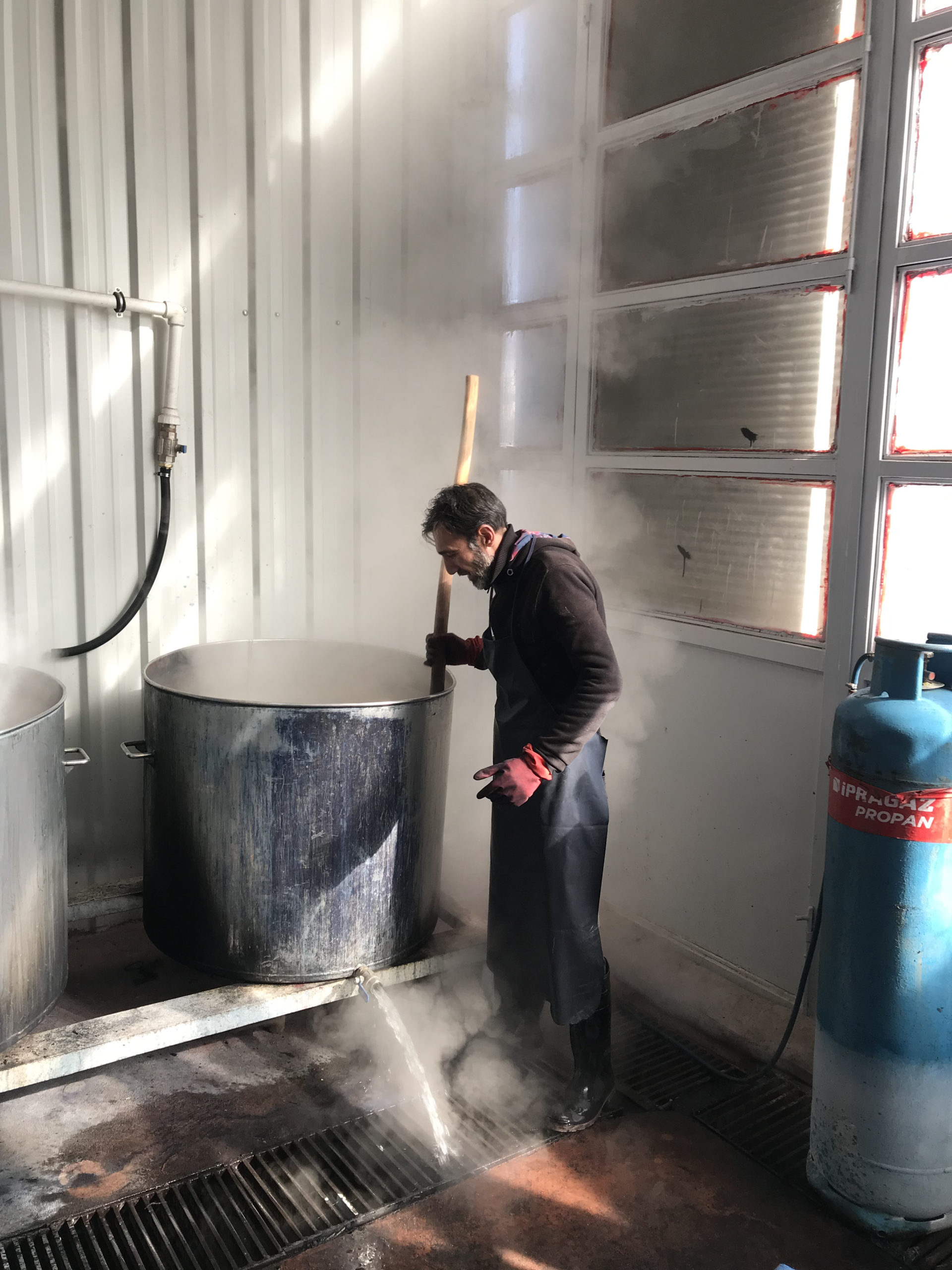 Photo: Natural Dying Process, 2018 Malatya
Photo: Natural Dying Process, 2018 Malatya
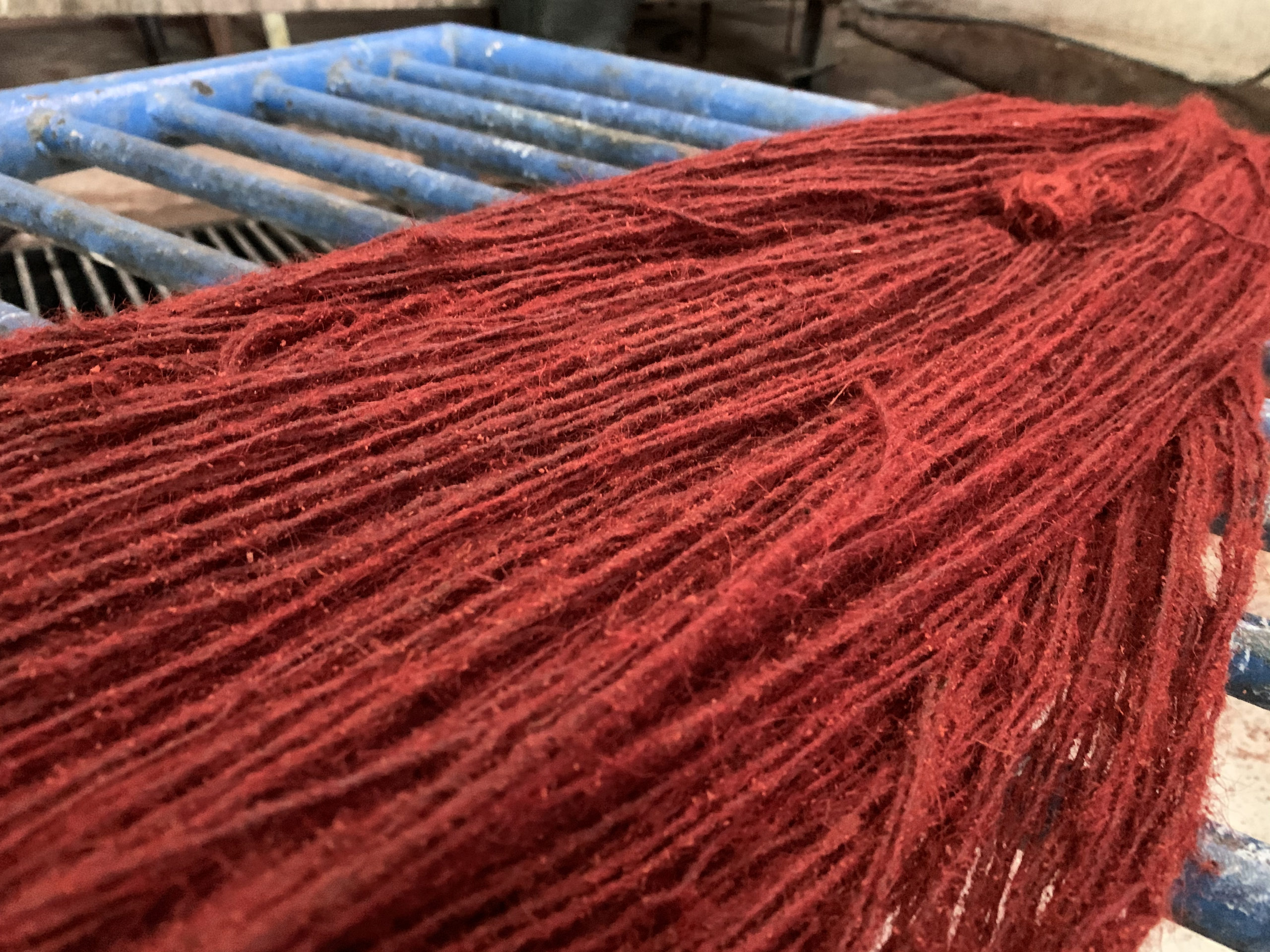 Photo: Dying handspun wool yarn with madder root, 2020 Malatya
Photo: Dying handspun wool yarn with madder root, 2020 MalatyaOur dyeing workshop is located in Malatya, a hub city in the Eastern Anatolian region of Turkey. It’s one of the birthplaces of ancient civilizations in the world, located in the west of the upper stream of the Euphrates River. It is around 950 meters above sea level, a highland city with a population of about 400,000, whose main industry is agriculture.
Water is the lifeblood of dyeing. The reason for opening the workshop in this region was that the water quality of the city's public water supply was excellent, and its pH (hydrogen ion index) was stable. Even though the pH levels are stable, we have a tank on top of the workshop building, storing water in it, constantly checking the water quality, and adjusting the acidity and alkalinity to take all possible measures. We selected unique materials that do not affect water quality for pipes and tanks that carry water. The quality of the water used is the decisive factor for dyeing. A slight change in pH affects the color and quality of dyeing. In addition, we are using rainwater and distilled water for some of our dyes as well.
Yarn dyeing is hot, heavy, and hard work. This process requires strong and experienced staff. There are 600 liters of water in a custom-made dyeing pot of stainless steel. While heating it with a gas burner, about 20 kilograms of thread is dyed at a time. Depending on the color, it may take a whole day to dye it, expose it to the air, and then dye it again. For each color, a fixed Ararat's recipe & procedure is followed. They are constantly stirred using a stick to prevent color unevenness and handspun threads from sticking together.
We have various colors that have never been dyed, using only the shade of sheep’s raw white, gray, or brown colors (please see the first three rows in our Color Chart Rug). It is a hand separation and brushing process to deliver exact natural undyed wool colors. We provide wonderful colors and tones in completely natural ways.
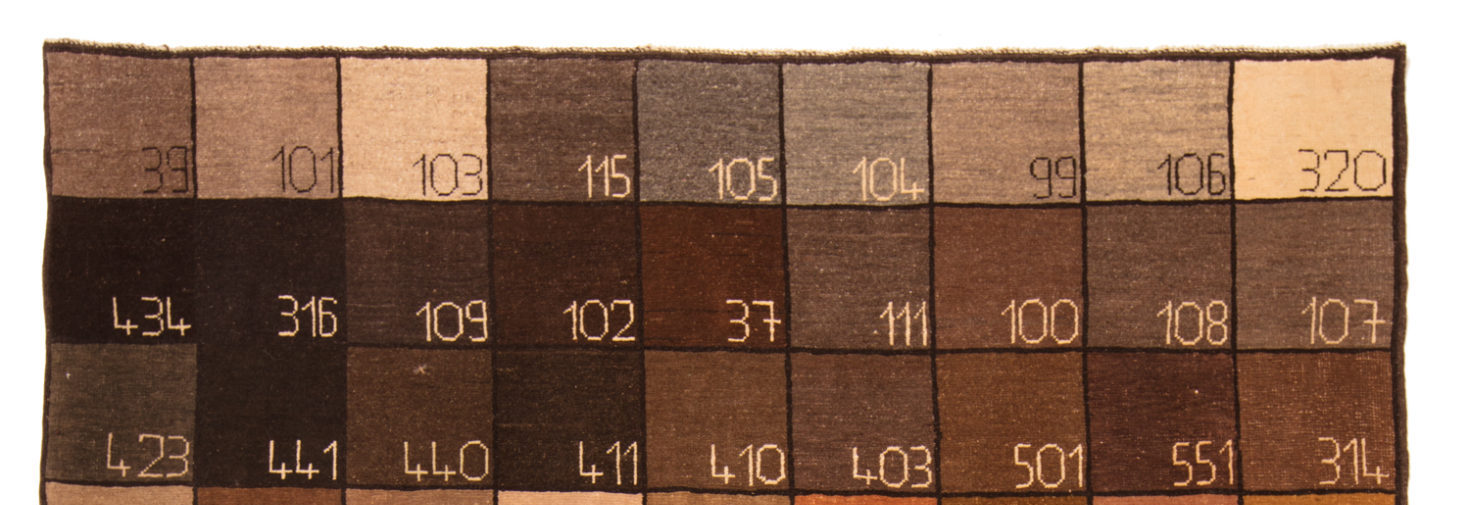
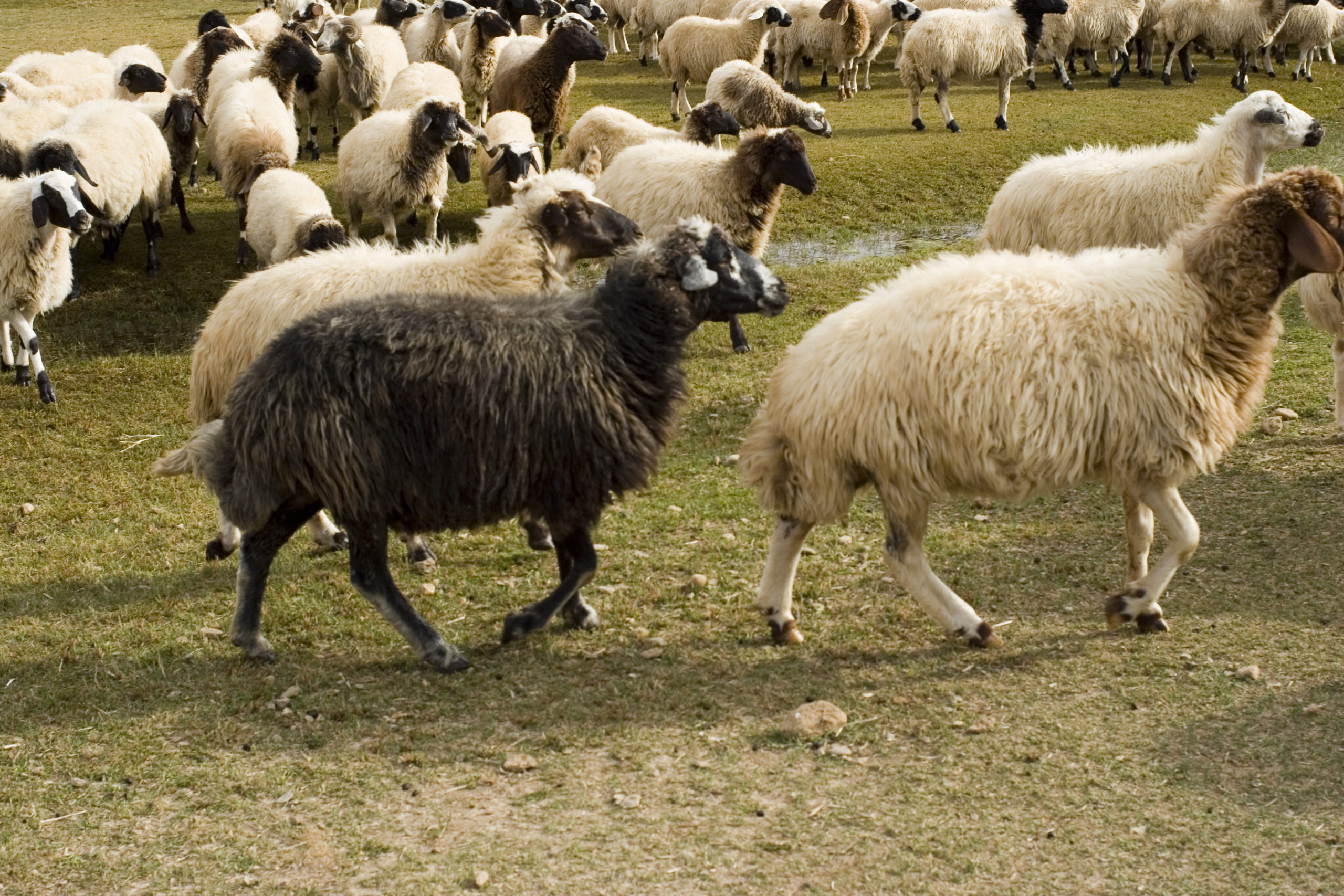 Photo: Sheeps from eastern Turkey, 2005 Ararat Mount
Photo: Sheeps from eastern Turkey, 2005 Ararat Mount